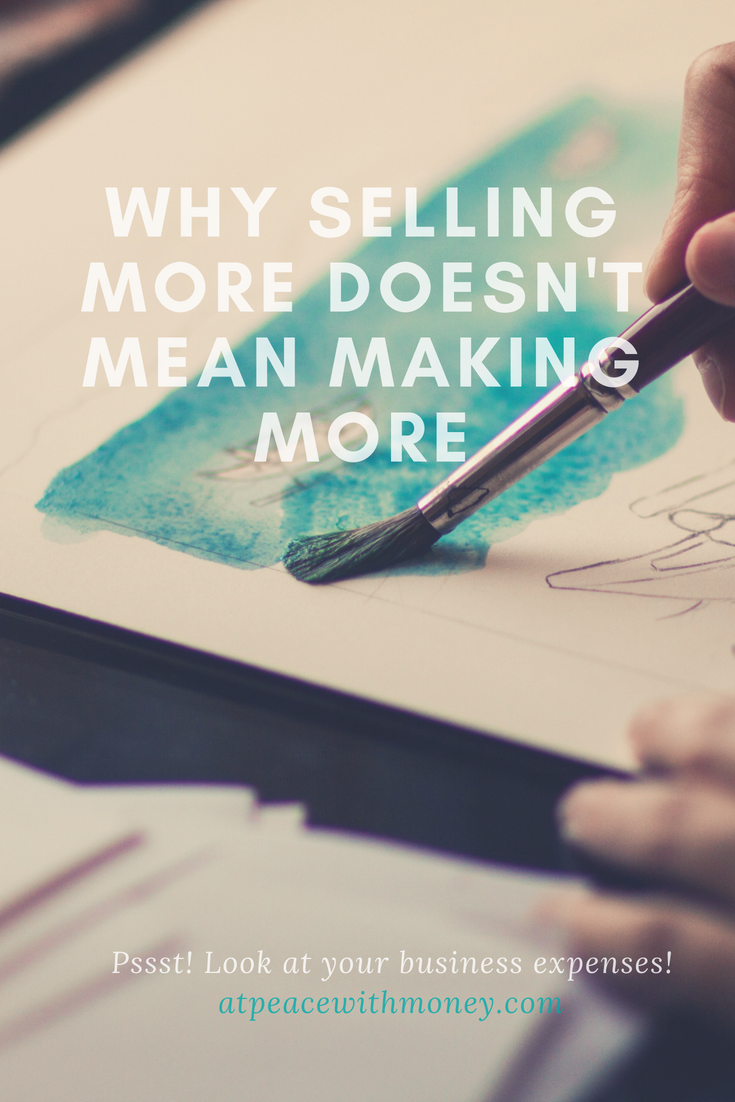Stellar Solopreneurs: How an Herbalist Does Money

Have you ever wondered how an herbalist makes money? This month on the blog, I’m running an interview series called “Stellar Solopreneurs!” We’ll hear from a couple different small business owners about their own financial insights and how they set up their money systems for financial success.
Today we’re hearing from Madeleine (aka Magic), who is the Head Content Creator for At Peace With Money, but also the herbalist extraordinaire of Roots in the Cracks Herbal Hub! Magic teaches online and local classes on herbal medicine making and identifying medicinal plants, and also runs an online educational membership, The Autonomous Herbalism Learning Community. Check out what they have to share about the financial side of their business:
Are there any tips for financial record-keeping you want to share with other small business owners?
I run a very simple business that’s service-based, so although I sometimes purchase supplies, I don’t typically have many transactions. I do all my financial record-keeping in a spreadsheet with a couple different tabs. Maybe I’ll outgrow this at some point, but for now, it works really well. I want to share this because I want other people to know you don’t have to overcomplicate things. As long as I stay on top of my record keeping and do it regularly, this very simple spreadsheet system works for me.
How do you prepare for taxes in your business?
My main strategy for this is that I have a tax savings account, very similar to what’s suggested by Profit First. I make sure that I factor in how much I need to save for taxes into my prices. This has been especially helpful when I’m preparing a new class series and figuring out how to price it. I know that a certain percentage will get taken off the top for taxes, so I price with that in mind. It’s really helpful to have the money on hand when it comes time to pay and helps me avoid emergencies.
How do you make decisions on what to spend on for your business, and what are some things that help you do that?
One time Angela gave me the advice to think about spending decisions in my business by asking the question “Will this help me make more money?” It seems like a simple question but it’s really helped me prioritize and think about what to invest in.
This advice helped me make the decision to hire PedX Courier & Cargo, a local bike courier co-op, to put up flyers for me, because paper flyering seems to be the best way to market my classes. Doing this increased enrollment and also freed up a lot of time for me because I wasn’t the one pasting up flyers all over the county! (I highly recommend PedX for people in the Santa Cruz area, by the way!)
What’s something you wish you’d known about the financial side of running your own business when you got started?
I wish I’d known better how to price my classes and membership. In the last year or so, I’ve had to reconcile with the fact that in some ways, I was running my business at a deficit to myself.
Now I try to ask myself questions like “Ok, how much am I getting paid to teach this class/run this membership? Is that enough for me to sustain myself and not feel scarce or burnt out?” Pricing is a much bigger part of the process of producing each class I teach, because I put a lot more time into thinking about how I can be financially accessible but also sustainable. There’s a lot of math involved, but it’s worth it because I get to still offer classes on a sliding scale, something that’s really important to me.
Want to connect with Magic’s herbalism work? Check out their website and join their mailing list, Herbal Magic Notes, to receive free recordings of the herbal workshops. If you liked their thoughts on small business finances and want some more ideas, check out my eBook, Reach Your Life Goals: A Business Owner’s Guide! Click here or below to download your copy.







 Another thing for product-based businesses to consider when looking at your pricing is your interest in wholesaling. When selling wholesale, you will typically sell at 50% of your retail price. If, at this price, you’re not covering your costs, labor and making a profit that supports your financial goals, you need to raise your prices.
Another thing for product-based businesses to consider when looking at your pricing is your interest in wholesaling. When selling wholesale, you will typically sell at 50% of your retail price. If, at this price, you’re not covering your costs, labor and making a profit that supports your financial goals, you need to raise your prices. 



 It’s important to note that beyond income needs, there are many other reasons why we might find it difficult to put a cap on our work hours. Many people use work as a coping mechanism, or pride themselves on long hours. Being busy is not a badge of honor. In the long run, busying yourself with your business can lead to solopreneur burnout and a lack of fulfillment in your business. The more you choose to
It’s important to note that beyond income needs, there are many other reasons why we might find it difficult to put a cap on our work hours. Many people use work as a coping mechanism, or pride themselves on long hours. Being busy is not a badge of honor. In the long run, busying yourself with your business can lead to solopreneur burnout and a lack of fulfillment in your business. The more you choose to 


 Another thing for product-based businesses to consider when looking at your pricing is your interest in wholesaling. When selling wholesale, you will typically sell at 50% of your retail price. If, at this price, you’re not covering your costs, labor and making a profit that supports your financial goals, you need to raise your prices.
Another thing for product-based businesses to consider when looking at your pricing is your interest in wholesaling. When selling wholesale, you will typically sell at 50% of your retail price. If, at this price, you’re not covering your costs, labor and making a profit that supports your financial goals, you need to raise your prices. 


